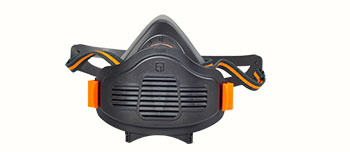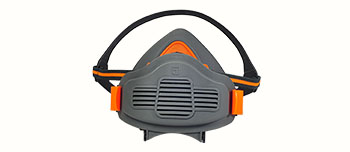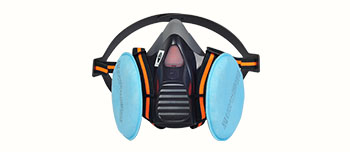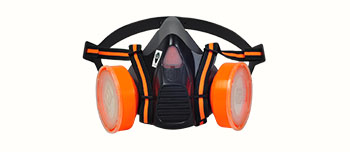The KN100 mask, with its ultra-high filtration efficiency (≥ 99.97% for non oily particles above 0.075 microns), is indeed a key protective equipment for preventing pneumoconiosis (such as silicosis, coal worker pneumoconiosis, etc.), especially in occupational exposure environments. The following is a deep analysis of the prevention of pneumoconiosis:
1、 Why can KN100 effectively block the source of pneumoconiosis?
Targeted filtering
Pneumoconiosis is mainly caused by long-term inhalation of silica (silica dust), coal dust, asbestos, metal dust, etc. These particles are mostly concentrated in the particle size range of 0.5-5 microns, and the retention rate of KN100 for these particles is close to 100%.
Comparative experiment: In coal mining operations, the filtration efficiency of KN100 for PM1~PM5 can reach 99.99%, significantly higher than KN95 (95%), greatly reducing the amount of dust deposited in the lungs.
Key protection threshold
The International Labour Organization (ILO) states that the highest level of protection is required when the dust concentration in the workplace exceeds 1mg/m ³ (0.05mg/m ³ for silica dust). KN100 can reduce the concentration of inhaled dust to a safe range (such as below 10 μ g/m ³).
2、 Comparison of protective effects in different occupational scenarios
Occupational type: Main dust risk, KN100 protective effect, precautions for use
Coal miners can reduce more than 99% of alveolar deposition dust from coal dust and silica, prevent coal worker pneumoconiosis by replacing it every shift, and avoid coal dust clogging the filter cotton
Stone processing silicon dust (with the strongest fibrotic effect) blocks the pathogenic source of silicosis core and reduces the risk of silicon nodule formation. It is necessary to cooperate with mask sealing inspection
Welding operation metal dust (iron, manganese, etc.) effectively filters micrometer sized metal particles in welding dust, but requires ozone protection (additional activated carbon layer is required). Choose the version with exhalation valve to reduce stuffiness and heat sensation
Demolition of buildings with cement dust and gypsum dust to prevent mixed pneumoconiosis, but attention should be paid to alkaline dust. Filter materials should be replaced in corrosive and humid environments, and the replacement cycle should be shortened
3、 5 Key Points for Scientific Use of KN100 Masks
Strict tightness testing
Beards and facial scars can cause a leakage rate of over 10%, resulting in a sudden drop in actual protective effectiveness. Qualitative/quantitative fitting tests (such as Bitrex spray method) are required.
Change cycle management
In high dust environments (such as total dust concentration ≥ 10mg/m ³), it is recommended to replace it every shift (4-8 hours); Low concentration environment can be extended to 40 hours, but respiratory resistance needs to be monitored.
Collaborate with other protective equipment
In places where the dust concentration exceeds 50mg/m ³ (such as sandblasting operations), a positive pressure gas supply system is required, and KN100 is only used as a backup protection.
Health monitoring cooperation
Even with the use of KN100, regular lung function tests and high kV chest X-rays (GBZ 70-2015 standard) are still necessary to detect abnormalities early.
 English
English





